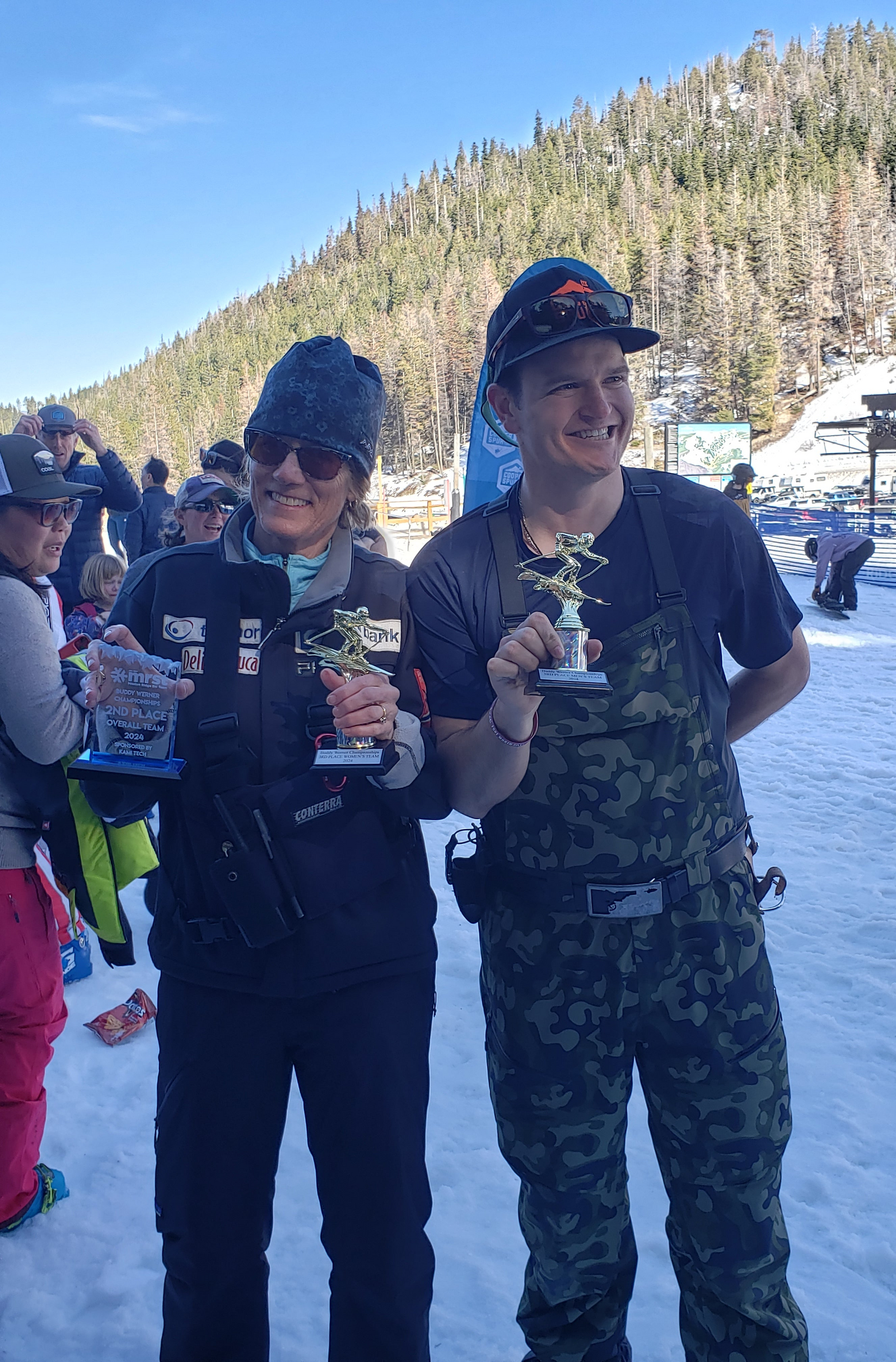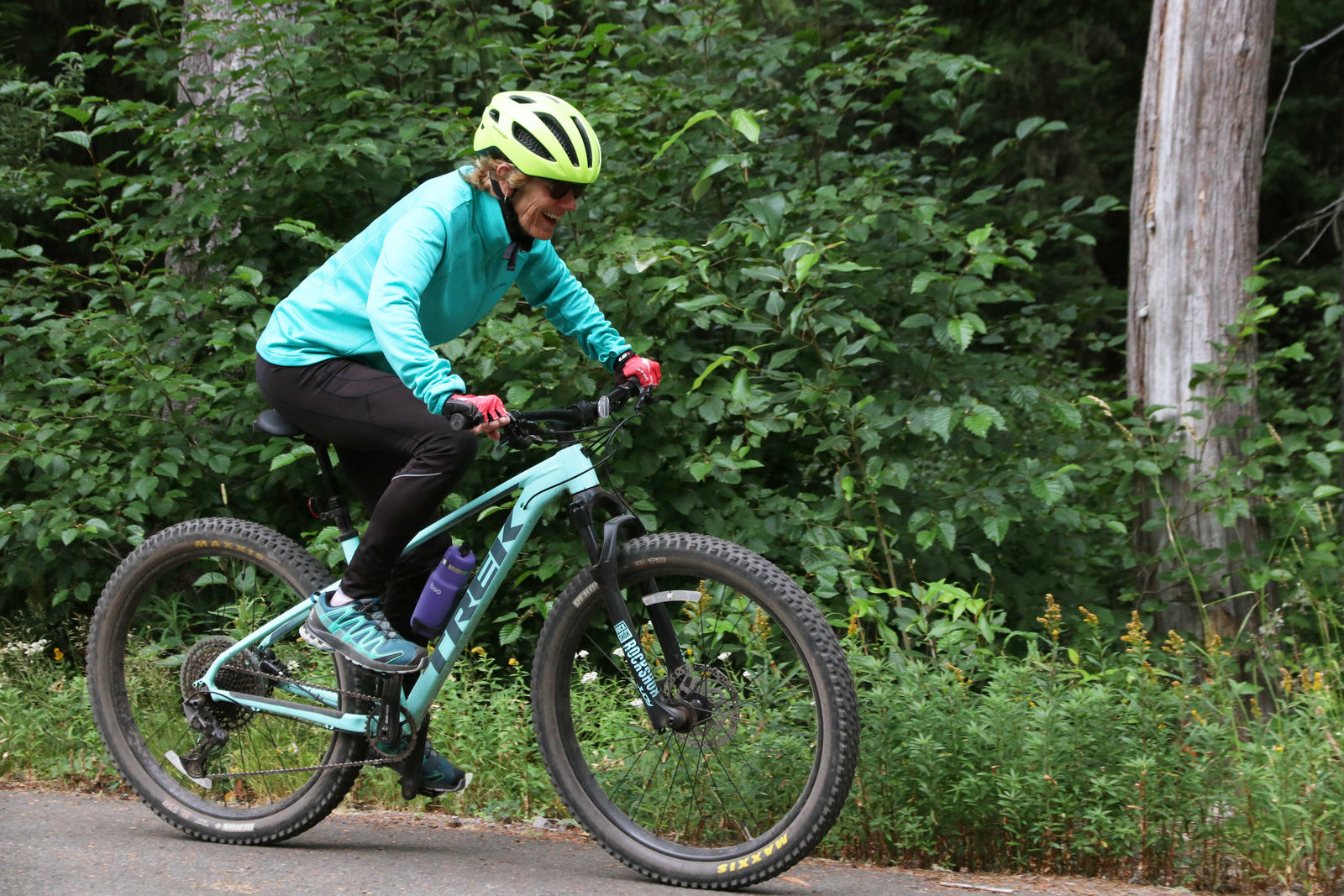August 17th, 2024 | by Mary Gunesch
Mary Gunesch has been coaching alpine ski racing on Mt. Hood, Oregon for the past 30 years. She grew up ski racing herself, and, after receiving her Master’s of Education, she started a ski academy based in Government Camp, OR which she ran for several decades. While she still coaches every winter, she now works full time teaching in a medical clinic for children, and she has become an expert in fostering growth and learning—in the classroom and on the mountain—in every type of student and athlete. Mary is also an avid cyclist and a great friend of Bivo! Thanks for joining us, Mary!
If you are thinking, “I don’t know any athletes who are neurodiverse,” read on. Neurodiverse athletes are more common than you think. They include a couple of the greatest Olympians, and probably include people you know.
The term “neurodiversity” is used to explain the way some brains work. Being neurodivergent means having a brain that works differently from a “neurotypical” person.
ADHD (Attention Deficit Hyperactivity Disorder) and Autism Spectrum Disorder (ASD) are two common types of neurodiversity. An estimated 8% of people in the population have ADHD. And the number in sports is higher because people with ADHD see and feel the benefits of playing sports. As a result, in any group of athletes, over 10% likely have ADHD.
Approximately 3% of people in the population have autism, and the number is higher if you include people who show autistic traits but have never been diagnosed. Interestingly, those numbers are growing as our understanding of autism is expanding.
Mary Gunesch has been coaching alpine ski racing on Mt. Hood, Oregon for the past 30 years. She grew up ski racing herself, and, after receiving her Master’s of Education, she started a ski academy based in Government Camp, OR which she ran for several decades. While she still coaches every winter, she now works full time teaching in a medical clinic for children, and she has become an expert in fostering growth and learning—in the classroom and on the mountain—in every type of student and athlete. Mary is also an avid cyclist and a great friend of Bivo! Thanks for joining us, Mary!
If you are thinking, “I don’t know any athletes who are neurodiverse,” read on. Neurodiverse athletes are more common than you think. They include a couple of the greatest Olympians, and probably include people you know.
The term “neurodiversity” is used to explain the way some brains work. Being neurodivergent means having a brain that works differently from a “neurotypical” person.
ADHD (Attention Deficit Hyperactivity Disorder) and Autism Spectrum Disorder (ASD) are two common types of neurodiversity. An estimated 8% of people in the population have ADHD. And the number in sports is higher because people with ADHD see and feel the benefits of playing sports. As a result, in any group of athletes, over 10% likely have ADHD.
Approximately 3% of people in the population have autism, and the number is higher if you include people who show autistic traits but have never been diagnosed. Interestingly, those numbers are growing as our understanding of autism is expanding.
Athletes with ADHD may demonstrate -
Medically, there are 3 types of ADHD:
It’s worth noting: Hyperactivity is not always present. This was previously called ADD (Attention Deficit Disorder), but is now called ADHD without Hyperactivity.
Recognizing athletes with ADHD:
Athletes with ADHD may demonstrate -
Medically, there are 3 types of ADHD:
It’s worth noting: Hyperactivity is not always present. This was previously called ADD (Attention Deficit Disorder), but is now called ADHD without Hyperactivity.
Recognizing athletes with ADHD:
Pictured above: Mary and another coach after their team earned 2nd place overall at the Buddy Werner Championships this past winter.
Have you ever known an athlete who does well and seems motivated but partway through the training asks, “Can we do something else?” People with ADHD need breaks. It can be difficult for them to do one thing and stay focused for an extended period.
It helps to get to know these athletes. If you are working with youth, remember not to use exercise as punishment; have them assist you with set up or give other opportunities to use their abundant energy in productive ways.
Pictured above: Mary and another coach after their team earned 2nd place overall at the Buddy Werner Championships this past winter.
Have you ever known an athlete who does well and seems motivated but partway through the training asks, “Can we do something else?” People with ADHD need breaks. It can be difficult for them to do one thing and stay focused for an extended period.
It helps to get to know these athletes. If you are working with youth, remember not to use exercise as punishment; have them assist you with set up or give other opportunities to use their abundant energy in productive ways.
Autism describes a spectrum of traits.
Primarily, it affects a person’s ability to:
Autistic people vary widely in their abilities, intelligence, and behaviors. Autism presents differently in many people. Some people with autism may simply seem shy, or they may have learned to mask their symptoms, which can be challenging and tiring for that person.
In interactions, some people with autism find it difficult to initiate conversations or maintain a smooth back-and-forth flow. You may observe slightly stilted speech, but that’s not always the case. They may exhibit atypical eye contact or facial expressions and tone of voice.
It is sometimes difficult for autistic athletes to understand what is being said. Figurative language, for example, is particularly difficult. If an athlete is dribbling a ball and you tell them to “pick it up,” (meaning go faster) they may pick up the ball. Sarcasm, humor, and metaphors are often not well understood.
Autism describes a spectrum of traits.
Primarily, it affects a person’s ability to:
Autistic people vary widely in their abilities, intelligence, and behaviors. Autism presents differently in many people. Some people with autism may simply seem shy, or they may have learned to mask their symptoms, which can be challenging and tiring for that person.
In interactions, some people with autism find it difficult to initiate conversations or maintain a smooth back-and-forth flow. You may observe slightly stilted speech, but that’s not always the case. They may exhibit atypical eye contact or facial expressions and tone of voice.
It is sometimes difficult for autistic athletes to understand what is being said. Figurative language, for example, is particularly difficult. If an athlete is dribbling a ball and you tell them to “pick it up,” (meaning go faster) they may pick up the ball. Sarcasm, humor, and metaphors are often not well understood.
Athletes with autism often prefer routines and may not like change. If you are with someone who is supposed to leave the training session early, they may check the time repeatedly and may ask, several times, “Do you know what time it is?” They may be nervous about possibly missing the time they have to leave the session. You can help them, or they can help themselves, by setting a timer. It can also be helpful for them to have an analog watch, which creates a picture of time, which makes more sense for their brains.
These athletes, as with athletes with ADHD, may be hyper-reactive or hypo-reactive to sensory input or their environment. For autistic athletes, noises, colors, and smells can be stressful. They may also be bothered when they feel weird, e.g., if they are wet, or thirsty, or sweaty and sticky. Help them have the right attire, let them take a coat off or put one on. They may like to dress the same way for each session and you may need to remind them to have one more layer or one less layer on some days.
Autistic athletes can say and do things that leave you scratching your head; that is a good indication that the neurodiversity you are seeing is autism.
Athletes with autism often prefer routines and may not like change. If you are with someone who is supposed to leave the training session early, they may check the time repeatedly and may ask, several times, “Do you know what time it is?” They may be nervous about possibly missing the time they have to leave the session. You can help them, or they can help themselves, by setting a timer. It can also be helpful for them to have an analog watch, which creates a picture of time, which makes more sense for their brains.
These athletes, as with athletes with ADHD, may be hyper-reactive or hypo-reactive to sensory input or their environment. For autistic athletes, noises, colors, and smells can be stressful. They may also be bothered when they feel weird, e.g., if they are wet, or thirsty, or sweaty and sticky. Help them have the right attire, let them take a coat off or put one on. They may like to dress the same way for each session and you may need to remind them to have one more layer or one less layer on some days.
Autistic athletes can say and do things that leave you scratching your head; that is a good indication that the neurodiversity you are seeing is autism.
Pictured above: Mary enjoying a ride in Government Camp
1. Having an Information Station. For example, if you want them to:
(a) Warm up, (b) Go through the course, (c) Drink water and (d) Have a snack,
create a picture communication board, where you have a picture of each activity.
2. Breaking skills up and teaching each step explicitly. For these athletes, remember that learning to pump gas means first learning which side the tank is on.
3. Having routines that these athletes can rely on. If possible, have a welcome, a warm-up, a main session, a cool-down, and finish with a debrief and goodbye.
When working with autistic brains:
Why should we learn to help athletes with ADHD and Autism?
Neurodiverse athletes bring a lot of strengths; they enrich teams and groups.
Many of the strategies that help athletes with ADHD and Autism help all athletes.
Pictured above: Mary enjoying a ride in Government Camp
1. Having an Information Station. For example, if you want them to:
(a) Warm up, (b) Go through the course, (c) Drink water and (d) Have a snack,
create a picture communication board, where you have a picture of each activity.
2. Breaking skills up and teaching each step explicitly. For these athletes, remember that learning to pump gas means first learning which side the tank is on.
3. Having routines that these athletes can rely on. If possible, have a welcome, a warm-up, a main session, a cool-down, and finish with a debrief and goodbye.
When working with autistic brains:
Why should we learn to help athletes with ADHD and Autism?
Neurodiverse athletes bring a lot of strengths; they enrich teams and groups.
Many of the strategies that help athletes with ADHD and Autism help all athletes.
Thanks to Mary Gunesch for all images
Thanks to Mary Gunesch for all images


Leave a comment (all fields required)